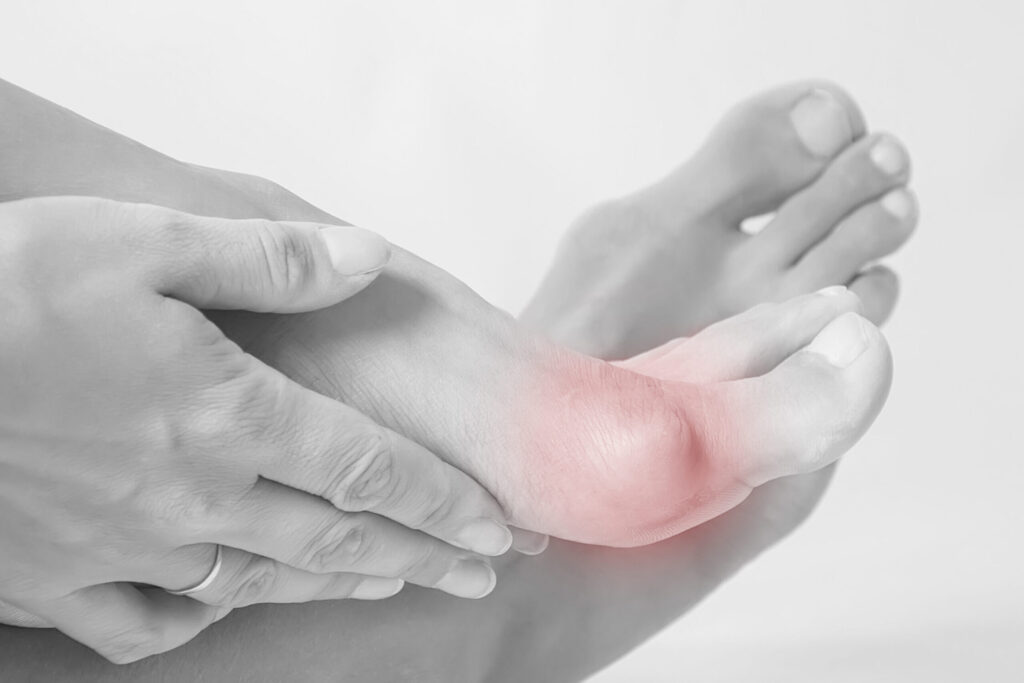Initially, those affected often complain of unpleasant aesthetics or shoe problems due to mechanically induced irritation over the prominent metatarsophalangeal joint with redness and tenderness. As the condition progresses, the forefoot area becomes wider, the neighbouring toes are increasingly displaced and the metatarsophalangeal joint degenerates prematurely due to malalignment. This leads to increasing pain and restricted movement. At an advanced stage, the big toe can overgrow or undergrow the neighbouring toes (hallux valgus superductus/subductus) and further small toe deformities develop.








